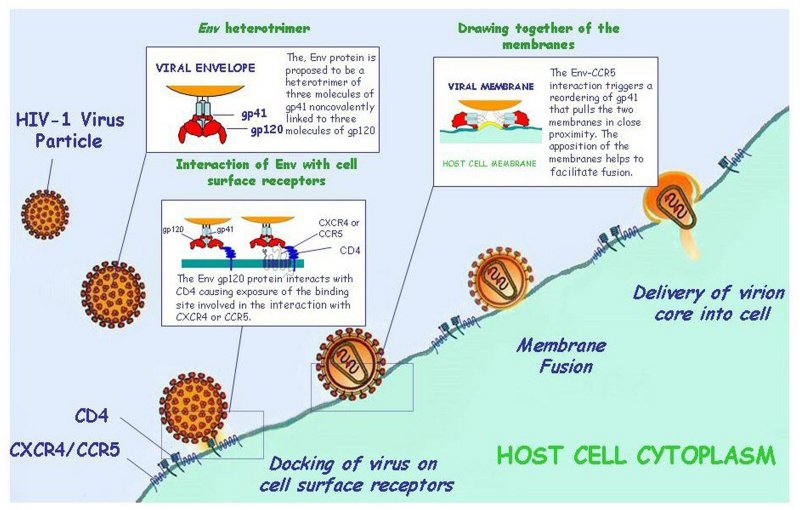

Figure 1. HIV-1 attachment and entry into cells. Initially, HIV-1 attaches to the cell through a low-affinity interaction with cell-surface markers such as DC-SIGN (not shown on diagram). This then allows the virion to engage in a high-affinity interaction with CD4 via the envelope glycoprotein gp120. The interaction of CD4 and gp120 causes a large conformational change in gp120, exposing a site within the gp120 protein that can bind to a coreceptor such as CCR5 or CXCR4. This triggers further conformational change, resulting in exposure of the fusion protein gp41, and subsequent membrane fusion and infection.